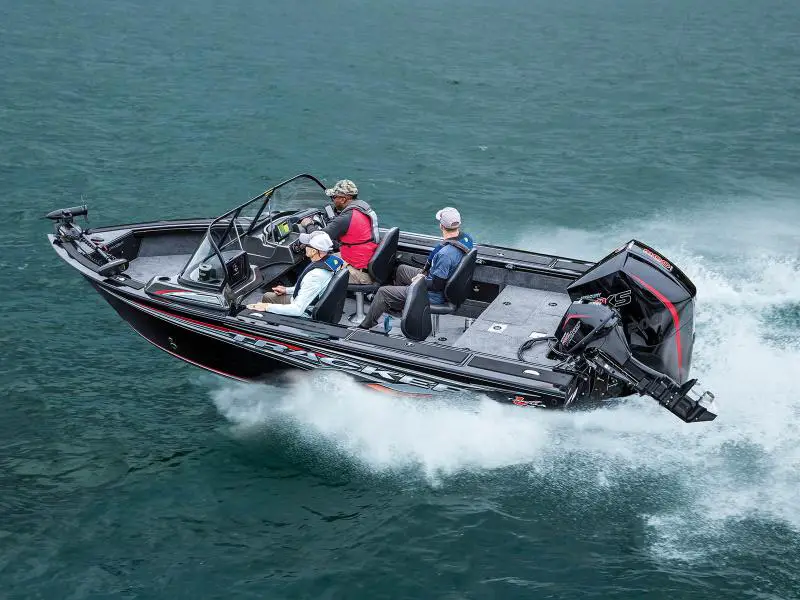Rare Fish - Top 10 Astonishing Finds Beneath the Waves
The world is home to many fascinating and rare fish species. These fish are not only unique in their appearances but also in their habitats and behaviors. They often live in isolated regions or have specialized requirements that make them hard to find.

Learning about these rare fish can help us understand the importance of conservation efforts. Many of these species face threats from habitat loss, climate change, and overfishing. By shining a light on these rare fish, the article aims to raise awareness and appreciation for the biodiversity of our planet's aquatic life.
1) Coelacanth
The coelacanth is a rare, deep-sea fish known for its ancient lineage. Often called a "living fossil," it was thought to have gone extinct 66 million years ago but was rediscovered off the coast of South Africa in 1938.
Coelacanths live in depths up to 2,300 feet below the ocean surface. They can grow up to 6.5 feet long and weigh up to 198 pounds.
These fish are more closely related to tetrapods than to other fish. This connection makes them significant for studying the evolution of land animals.
Coelacanths have unique characteristics, such as lobed pectoral fins, which resemble limbs. These fins may have similarities to the limbs of early tetrapods.
They are elusive creatures, living in underwater caves and canyons. Their blue coloration helps them blend into their deep-sea environment.
Notably, coelacanths can live up to 100 years. This long lifespan surprises scientists and adds to their mysterious allure.
2) Devils Hole Pupfish
The Devils Hole pupfish, known scientifically as Cyprinodon diabolis, is a critically endangered species. It lives only in Devils Hole, a water-filled cavern in Nevada, USA.
This tiny fish, often less than an inch in length, has a unique appearance. Males display an iridescent blue color, while females are an olive hue. Both have large heads and lack pelvic fins.
The population of Devils Hole pupfish has fluctuated greatly. In the 1950s, scientists found around 200 individuals during the spring. By the mid-1990s, numbers had dropped significantly. In 2013, the population hit a low of just 35 fish.
Efforts to protect and breed the Devils Hole pupfish in captivity have seen some success. Researchers continue to monitor their numbers closely, making this species a key indicator of environmental changes.
These fish are closely related to other pupfish species like C. nevadensis and the Death Valley pupfish, but their habitat is extraordinarily limited. Keeping this rare species alive remains a critical concern for conservationists.
3) Red Handfish
The red handfish is one of the rarest fish in the world. Known scientifically as Thymichthys politus, it stands out for its unique way of moving. Unlike most fish, it uses its hand-like fins to walk on the sea floor rather than swim.
This peculiar fish is found only in the waters off Tasmania, in the Tasman Sea. Until recently, there was just a small population of about 20 to 40 individuals known to exist.
A recent discovery has almost doubled their numbers, giving hope to conservationists. Despite this, their total population is still very small, possibly around 100 fish.
Red handfish have a distinctive red color which helps them blend into their rocky habitat. Their unusual method of locomotion and their limited habitat make them a unique and fascinating species to study.
Efforts are being made to protect their habitat and ensure their survival. Preserving these rare creatures helps maintain the biodiversity of our oceans.
4) Axelrod's Rainbowfish
Axelrod's Rainbowfish is a unique species found in Papua New Guinea. It thrives in the gentle streams of the Yungkiri stream, where the water moves slowly. These fish have a lighter-colored body with a blue-tinged abdomen.
They grow to about 4 inches in length. Their appearance includes faint black stripes, making them look somewhat like a zebra. This species is part of the Melanotaeniinae subfamily.
In the wild, Axelrod's Rainbowfish prefers habitats surrounded by lush rainforest. The water is usually cloudy and narrow. When kept in aquariums, they need clean water with good filtration. They are a peaceful species and can be kept with other similarly sized fish.
They are often found in community aquariums with other rainbowfish, danios, and barbs. For best results, they should be kept in groups of at least 6 to 8. This helps mimic their natural shoaling behavior.
Axelrod's Rainbowfish was named after tropical fish expert Herbert Axelrod. Their scientific name is Chilatherina axelrodi. G. R. Allen first described them in 1979. It is important to replicate their natural environment as closely as possible when kept in captivity.
5) Banggai Cardinalfish
The Banggai cardinalfish (Pterapogon kauderni) is a small and striking tropical fish. Known for its bold black stripes and elegant fins, it is highly sought after in the aquarium trade. This species is native to the Banggai Archipelago in Indonesia but has also been found in other areas due to human activities.
Banggai cardinalfish thrive in shallow waters, typically around 1-2 meters deep. They prefer coral reefs and seagrass beds where they find plenty of hiding spots. They are known for their strong site fidelity, meaning they rarely stray from their home territories.
Despite being popular in captivity, the Banggai cardinalfish faces significant threats in the wild. Overfishing for the aquarium trade and habitat destruction have severely impacted their populations. In response, conservation efforts are underway to protect and rehabilitate their natural habitats.
Due to these threats, the Banggai cardinalfish has been listed as an endangered species. This listing aims to regulate their trade and ensure sustainable practices. Efforts to breed them in captivity have seen success, helping to reduce pressure on wild populations.
These fish are also notable for their reproductive behavior. Males carry the eggs in their mouths until they hatch, offering protection to the developing young. This unique trait adds to their appeal among aquarists and researchers alike.
6) Psychedelic Frogfish
The psychedelic frogfish, known scientifically as Histiophryne psychedelica, is a unique fish species found primarily in the waters of the western Pacific. It stands out with its vivid coloration and distinctive swirled patterns, which resemble fingerprints.
This fish can grow up to 15 centimeters (about 5.9 inches) in length. Unlike many other fish, the psychedelic frogfish has flabby, fleshy skin without scales. These features help it camouflage in its environment.
The psychedelic frogfish is noted for its unusual locomotion. Instead of typical swimming, it moves by hopping across the ocean floor, using its pectoral fins to push off surfaces. This is quite rare and fascinating to observe.
Another interesting trait is its reproductive behavior. The female psychedelic frogfish is an egg-brooder. She lays large clusters of eggs, sometimes around 220, and carries them attached to her body. She uses her fins to wrap around and protect the eggs from predators until they hatch.
Discovered only recently, this species was named one of the top 10 new species found in 2009 by the International Institute for Species Exploration. Its unique appearance and behaviors make it a captivating subject for marine researchers and enthusiasts alike.
7) Wrought Iron Butterflyfish
The wrought iron butterflyfish is known for its unique, metallic appearance. Its scales look like silvery black iron, giving it a striking presence in the water. This fish is native to the western Pacific Ocean, particularly around central and southern Japan.
These butterflyfish are quite rare. They are often seen among coral reefs and rocky areas, where they graze on algae. They are not commonly found outside their native habitat.
In the aquarium trade, these fish are highly sought after due to their rarity. They can be very expensive, with prices sometimes exceeding $4,000. Their vivid black and yellow coloration makes them a popular choice for collectors willing to pay a high price.
The wrought iron butterflyfish often form schools, moving gracefully in synchrony. Observing a group of these fish can be a mesmerizing experience. They showcase the beauty and diversity found in marine life in a way few other species can.
8) African Tigerfish
The African Tigerfish, known scientifically as Hydrocynus vittatus, is a formidable predator found in many rivers and lakes across Africa.
Measuring nearly 41 inches (105 cm) in length, this fish is known for its powerful, muscular build and sharp teeth. The teeth are conical and razor-sharp, allowing it to catch and consume prey efficiently.
They inhabit various freshwater systems, from Egypt to South Africa. These fish are often compared to the South American piranha due to their aggressive nature.
African Tigerfish also have distinct, tiger-like stripes across their bodies. Their weight typically ranges from 25 to 30 kg, but some can reach up to 45 kg.
They are opportunistic predators, using their keen eyesight to locate and chase down prey in the water. Their diet mainly consists of other fish, including smaller members of their own species.
They prefer warm waters, thriving at temperatures between 72°F to 82°F (22°C to 28°C). They are particularly often found in calmer eddies of rapids, which they use to ambush their prey.
The African Tigerfish's reputation as a fierce and skilled predator makes it a species of great interest to anglers and biologists alike.
9) Asian Arowana
The Asian Arowana, also known as the dragon fish, is one of the most sought-after freshwater fish in the world. It belongs to the Osteoglossidae family and is known for its elongated body and large metallic scales.
Asian Arowanas can grow over 3 feet long in captivity. They come in various colors, including red, green, gold, and silver-blue. Their prominent barbels and large teeth help them catch prey, maintaining their status as top predators in their natural habitats.
These fish are often associated with good luck and prosperity, which makes them highly prized. Some Asian Arowanas, especially rare varieties, can be quite expensive, sometimes reaching prices of several thousand dollars.
Caring for an Asian Arowana requires dedication. They need a large tank, stable water parameters, and a diet of live food.
Their stunning appearance and the belief in their luck-bringing qualities make them a fascinating addition to any aquarium.
Asian Arowanas are not just a visual delight but also a reflection of biodiversity and ecological richness. Their high price and rarity add a layer of exclusivity, attracting aquarists and enthusiasts from around the world.
10) Platinum Alligator Gar
The Platinum Alligator Gar is a rare and expensive fish. It is admired by aquarium enthusiasts for its unique appearance. This fish is a selectively bred variety of the Alligator Gar, originating from Asia.
Platinum Alligator Gars have long, slender, torpedo-shaped bodies. They possess small eyes and a heterocercal tail. Their platinum color sets them apart, making them a prized addition to large aquariums.
These fish are native to the Southern United States in wild form. The platinum variety, however, has become popular in countries like Japan and China. Their rarity and unique color drive high demand, increasing their value.
These massive fish can reach lengths of 6-10 feet in the wild. They require a tank of at least 200 gallons if kept in captivity. Despite their size, they are social creatures and prefer the company of 3-6 other fish of their kind.
Importance of Rare Fish in Aquatic Ecosystems
Rare fish play crucial roles in maintaining the health and diversity of aquatic ecosystems. They contribute to biodiversity and help sustain water quality in their habitats.
Maintaining Biodiversity
Rare fish are vital to the biodiversity of aquatic ecosystems. Each species has a unique role, often filling specialized niches that no other species can.
For instance, the Devils Hole Pupfish, one of the rarest fish in the world, has adapted to live in a highly specific ecological niche.
By preserving rare fish, we maintain the balance of food webs. Their presence supports the prey-predator dynamics that keep other species populations in check. Reduction or extinction of these species can lead to unpredictable cascades affecting entire ecosystems.
Additionally, rare fish often have unique genetic traits that contribute to the resilience of fish populations. This genetic diversity is crucial, as it enhances the ability of species to adapt to environmental changes and resist diseases.
Impact on Water Quality
Rare fish also play a role in maintaining water quality. Many rare species engage in behaviors that help keep water clean and free from excess nutrients.
For example, some bottom-dwelling rare fish, such as the Golden Nugget Pleco, help maintain the substrate quality by feeding on algae and organic matter.
Their activities can reduce the level of harmful nutrients that might otherwise accumulate and lead to issues like algal blooms. Algal blooms can drastically reduce oxygen levels in water, affecting not just fish but all aquatic life.
Rare fish often contribute to nutrient cycling by converting nutrients into forms that are beneficial for plants and other aquatic organisms. They help maintain a balanced environment, ensuring that their habitats remain hospitable for a diverse range of species.
Factors Contributing to Rarity
Several critical factors contribute to the rarity of certain fish species, including habitat destruction, climate change, and overfishing. Each of these factors plays a distinct role in reducing fish populations and affecting their ecosystems.
Habitat Destruction
Habitat destruction drastically impacts fish populations.
Natural habitats such as coral reefs, mangroves, and seagrass beds are often destroyed by human activities.
Coastal development and pollution are significant contributors. When these habitats are damaged, fish lose their breeding, feeding, and sheltering grounds.
Consequently, species that depend heavily on specific habitats become rare. For instance, coral reef fish struggle to survive when reefs are destroyed by practices like dynamite fishing or trawling.
Additionally, the degradation of mangroves affects fish nurseries, leading to decreased juvenile survival rates.
Climate Change
Climate change is another major factor.
Rising sea temperatures and ocean acidification affect fish directly and indirectly.
Warmer waters can alter migration patterns, forcing fish to move to cooler areas. For example, tropical species might shift towards the poles, leading to a loss of habitat for those unable to migrate.
Ocean acidification, caused by increased CO₂ levels, affects the calcium carbonate structures of coral reefs and shells of marine organisms.
This weakens the ecosystems that many fish rely on, causing some species to become rare. Furthermore, extreme weather events linked to climate change can destroy habitats, disrupting the delicate balance of marine life.
Overfishing
Overfishing severely diminishes fish populations.
Certain species are overharvested because of their high economic value or as food resources. Large predators like sharks and tuna are particularly affected.
Overfishing reduces their numbers to the point where they become rare or endangered.
Moreover, bycatch—catching unintended species while fishing for others—further depletes fish populations. Overfishing also disrupts the food chain, affecting the entire marine ecosystem.
Sustainable fishing practices and regulations are critical to preventing the extinction of rare fish species caused by overexploitation.
Conservation Efforts
To protect rare fish species, effective conservation measures are crucial. These efforts often focus on creating protected areas and implementing captive breeding programs.
Protected Areas
Protected areas, like Marine Protected Areas (MPAs), safeguard habitats critical to rare fish. These regions help reduce human activities such as overfishing and pollution.
For example, many MPAs have been set up where concentrations of endangered fish are high. Fishing and other destructive practices are restricted in these zones.
Enforcement is key to the success of protected areas. Governments and local communities must work together to patrol and manage these regions. Monitoring and research also continue within MPAs to ensure fish populations are recovering.
MPAs play a vital role in preserving biodiversity and supporting the survival of endangered fish.
Captive Breeding Programs
Captive breeding programs aim to increase the population of endangered fish species. Fish are bred and reared in controlled environments before being released back into the wild.
This approach has helped species like the Chinese Paddlefish and others on the brink of extinction.
Careful selection of breeding pairs and maintaining genetic diversity are critical components.
Scientists monitor the health and development of fish bred in captivity. Once mature and healthy, these fish are introduced into their natural habitats under controlled conditions.
These programs also serve as a backup in case wild populations continue to decline.
Frequently Asked Questions
This section covers some of the most common questions about rare fish species, including their characteristics, conservation status, and appeal to collectors.
What are the top ten most elusive fish species in the ocean?
Several fish species are known for their rarity and elusiveness, including the Coelacanth, a prehistoric fish thought to be extinct until its rediscovery. Other rare species include the Devils Hole Pupfish, Red Handfish, Axelrod's Rainbowfish, and Banggai Cardinalfish. Each of these species has unique qualities that make them difficult to find in the wild.
Which are considered the most beautiful rare fish?
Some of the most visually stunning rare fish include the Axelrod's Rainbowfish and the Banggai Cardinalfish. Axelrod's Rainbowfish is known for its vibrant, multi-colored scales, while the Banggai Cardinalfish features striking black and white patterns.
What is the status of the Devils Hole pupfish population?
The Devils Hole Pupfish is critically endangered with a very limited population. Conservation efforts are ongoing to stabilize and increase their numbers, but the species remains one of the rarest fish in the world.
Which rare fish are the most sought after by collectors?
Collectors often seek out species like the Coelacanth and Axelrod's Rainbowfish due to their rarity and unique physical features. These fish can be incredibly difficult to obtain, and their high value reflects their limited availability.
How are the rarest fish in the Atlantic Ocean identified?
To identify rare fish in the Atlantic Ocean, researchers often use methods like tagging, genetic sampling, and underwater cameras. These tools help track the population and distribution of species like the European Sea Sturgeon.
What are the conservation efforts in place for the rarest freshwater fish?
Conservation efforts for rare freshwater fish, such as the Devils Hole Pupfish, include habitat protection, breeding programs, and legal protections. These efforts aim to prevent extinction and support population recovery.
Charlie is Editor-in-Chief of Sea Magazine







